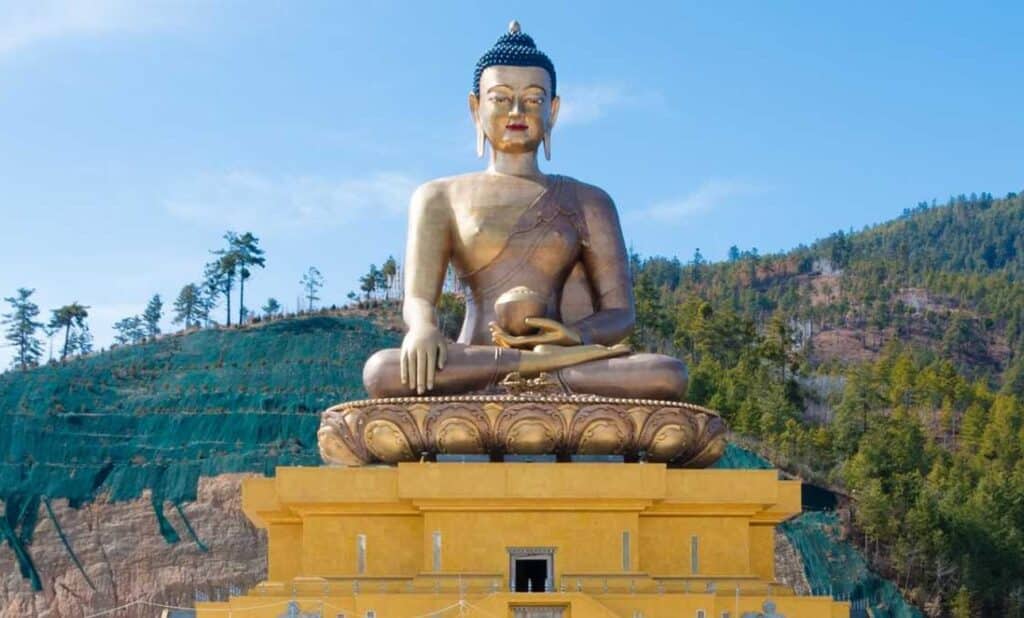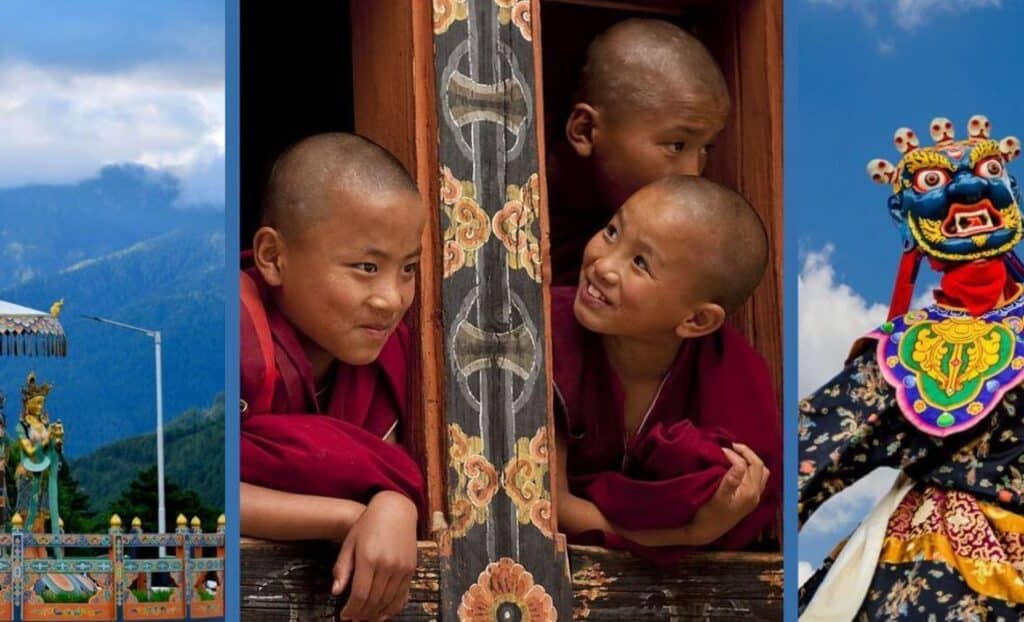Trip to Bhutan: The Kingdom of Happiness
Bhutan, a small country nestled in the heart of the Himalayas, is known as “The Kingdom of Happiness.” Located between two Asian giants, China to the north and India to the south, Bhutan is a place that feels almost untouchable, with its imposing nature, ancient culture, and unique philosophy of life. Despite being one of the smallest countries in the world in terms of population and land size, with only 38,394 square kilometers and around 800,000 inhabitants, Bhutan stands out for its radically different approach to the development and happiness of its citizens.
One of the most remarkable aspects of Bhutan is its concept of **Gross National Happiness (GNH)**, a philosophy that places the happiness of the population above Gross Domestic Product (GDP). This idea, introduced by Bhutan’s fourth king, Jigme Singye Wangchuck, in the late 1970s, seeks a balance between material progress and the spiritual and emotional well-being of the population. Unlike countries that focus on the accumulation of wealth and economic growth as indicators of success, Bhutan measures its progress through criteria including health, education, culture, environmental sustainability, and governance. GNH has become a global model for development, attracting the attention of governments and scholars worldwide looking for alternatives to the traditional economic growth approach.
Bhutan has been able to maintain a way of life that preserves its cultural and spiritual identity. Tibetan Buddhism is the dominant religion in the country and plays a central role in the lives of the Bhutanese people. The monasteries and stupas, which adorn the country’s mountainous landscapes, are not only places of worship but also symbols of the deep spiritual connection between the people and nature. The Tiger’s Nest Monastery (Paro Taktsang), one of the country’s main tourist attractions, is an impressive example of Bhutanese religious architecture. Situated over 3,000 meters above sea level, this monastery is built into a rocky cliff and is one of Bhutan’s most iconic destinations. Legend has it that Guru Rinpoche, the principal founder of Tibetan Buddhism, flew to the site in the 8th century and meditated there, lending it a mystical and reverent aura.
The landscapes of Bhutan are equally breathtaking, contributing to the country’s almost magical atmosphere. The mountainous geography, with peaks rising over 7,000 meters, creates spectacular views of deep valleys, virgin forests, and crystal-clear rivers. Bhutan’s flora and fauna are exceptionally diverse, thanks to the variety of altitudes and climates found throughout the country. From the cold, desolate high peaks of the Himalayas to the warm subtropical valleys in the south, Bhutan is home to a wide range of animal and plant species. In the mountains, snow leopards, tigers, bears, and the rare red panda can be found, while the forests are filled with various species of trees and plants, many of which have medicinal value.
Environmental protection is a priority in Bhutan, and the country has adopted environmental policies that make it a model in terms of sustainability. Approximately 72% of its territory is covered by forests, which not only help regulate the climate and protect biodiversity but also make Bhutan a global “carbon sink.” This means the country absorbs more carbon dioxide than it emits, contributing significantly to the fight against climate change. Bhutan’s commitment to sustainability extends to tourism, with the country adopting an ecotourism approach that minimizes environmental impact. Tourism in Bhutan is exclusive and carefully regulated through a daily fee system aimed at ensuring that visitors respect the local culture and natural surroundings.
One of the most fascinating aspects of Bhutan is how it has managed to preserve its cultural identity despite the pressures of the modern world. Traditional dress remains mandatory in schools and offices, and the country’s architecture maintains a style that reflects its Tibetan heritage. Traditions, such as the Tshechu, an annual festival that celebrates the lives of Buddhist saints, are still central to the social life of the country. During this event, monks perform ritual dances while citizens dress in their most elaborate outfits, creating an atmosphere of joy, color, and spirituality.
In addition to its focus on culture and nature, Bhutan has made significant advances in areas such as education and healthcare. The literacy rate in Bhutan has risen considerably in recent decades, and healthcare is of high quality and accessible to all citizens. Despite being a small and relatively isolated country, Bhutan has managed to maintain a balance between modernity and tradition, allowing it to preserve its most essential values while participating in the globalized world.
In conclusion, Bhutan is a unique example of how a country can thrive without following traditional models of economic growth. Its focus on happiness, spirituality, and sustainability makes it a fascinating destination for travelers and those seeking to understand new approaches to development. In Bhutan, the connection with nature, respect for traditions, and the pursuit of happiness are the pillars upon which daily life is built, making this small kingdom an extraordinary place in the modern world.



